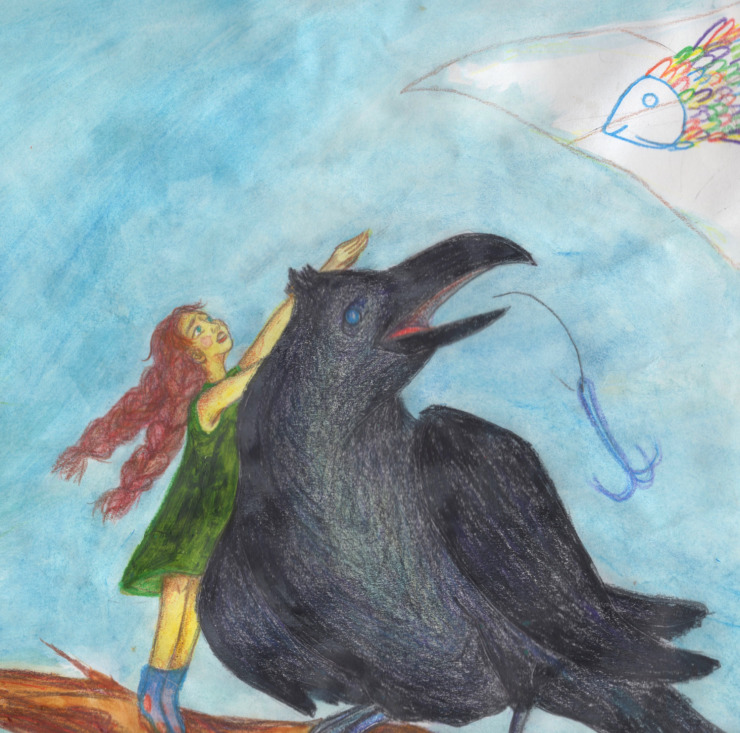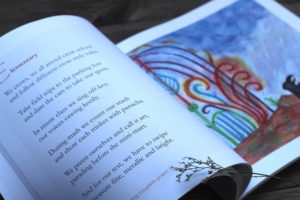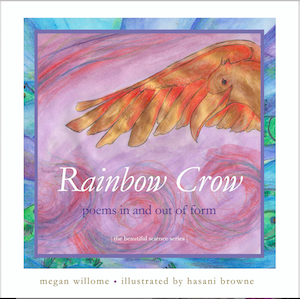Bad Birds and Big Words: Crow Poems
One reason to write a lot of poems about one subject is to let the process teach you something you didn’t know about this thing that interests you; in the case of writing thirty-plus crow poems in form I learned that to truly express the terror and majesty of this bird, it’s important to use big words.
And for that, you need a dictionary.
Every single day that I write, I use a dictionary, and often a thesaurus. I like to look up what words mean, what other words they are like (synonyms) and what words are their opposites (antonyms). From my earliest days of writing crow poems, I found myself picking big words: spelling bee-worthy words. The more I learned about crows, the more it seemed like a wise choice.
Crows are among the smartest animals on earth. Their ability to form tools and solve puzzles makes them unique. If they could speak, I suspect they would want to use as many big words as possible to show off their bird brains.
As I’ve continued to write crow poems, I’ve also continued to read crow poems. It seems poets cannot resist this avian Muse. As I read I’m looking to see if the poet captures the essence of Crow. Is he dusting a sad person with snow? Talking back to a judge? Excellent! Maybe the poem teaches me a new Crow concept along with a new word, like Lucia Perillo’s crows who are Fossicking trash for stale buns? What does fossick mean? Why did she use it? In this poem maybe the harder word is the better word.
Madeliene L’Engle, author of A Wrinkle in Time, defended the use of big words in children’s books.
I remember Beatrix Potter uses ‘soporific’; lettuce has a ‘soporific’ effect. She wouldn’t be allowed to do that today. They’d say, ‘You can say it makes them sleepy.’ She’d say, ‘No, that’s not what I mean. I mean ‘soporific.’”
When I hear the word soporific, I think of a word it rhymes with: terrific. So in the case of Potter’s story of Peter Rabbit, lettuce has a soporific effect, that is, it makes bunnies terrifically sleepy. Not just tired, but the bliss of a happy nap. Sleepy lettuce is dull. Soporific lettuce is magical.
Rainbow Crow contains a short dictionary at the end. Believe me, I wasn’t trying to show off or — goodness gracious — enrich the vocabulary of young people. It was simply that Crow demanded nothing less than the best word, and that was often the big word. Why tease when you can hector? Why be proud when you can be supercilious? Why caw when you can opine?
Your Turn
What have you learned about your subject by writing about it in a variety of forms? How has erecting a fence, board by board, helped you to better get to know your subject? Use that knowledge to try some more types of poems!
Illustration by Hasani Browne, from Rainbow Crow by Megan Willome. Post by Megan Willome.
Browse more children’s poetry
“Megan Willome has captured the essence of crow in this delightful children’s collection. Not only do the poems introduce the reader to the unusual habits and nature of this bird, but also different forms of poetry as well.”
—Michelle Ortega, poet and children’s speech pathologist
- Perspective: The Two, The Only: Calvin and Hobbes - December 16, 2022
- Children’s Book Club: A Very Haunted Christmas - December 9, 2022
- By Heart: ‘The night is darkening round me’ by Emily Brontë - December 2, 2022



Leave a Reply